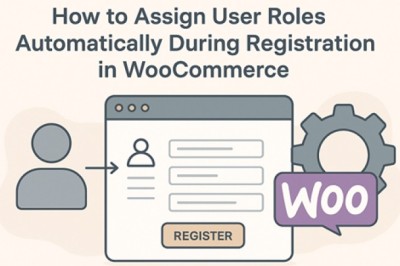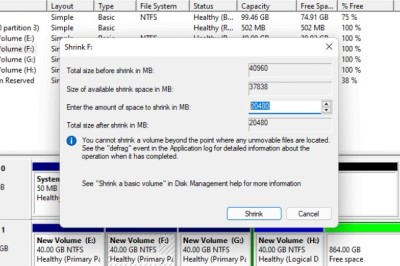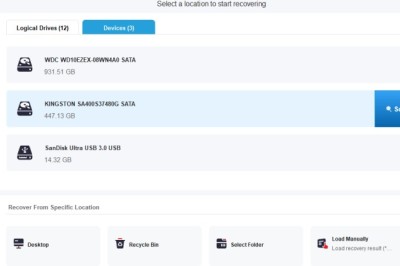views

Photo from Freepik
AI won’t replace your marketing, but done right, it removes busywork so you can focus on the message, market fit, and customer experience.
TL;DR
Start with clear positioning and goals, then plug AI into a few high-leverage workflows: research, content drafting, targeting, and follow-ups. Keep a human hand on brand voice and offers, and measure only what you’ll act on.
Lead with the plan
Put strategy first: define who you serve, the problem you solve, and one core offer. AI multiplies clarity; it can’t fix a fuzzy promise.
Use AI to shape
➢ Business plan generation
➢ Compliance
➢ Marketing insights
➢ Bookkeeping
➢ Customer support/engagement
➢ Hiring and HR
➢ Sales/inventory management
➢ Product innovation
➢ Decision-making
Where AI helps most (quick wins)
● Audience research: summarize 10 competitor pages and 20 reviews into pain points and desired outcomes
● Messaging drafts: turn your value promise into headlines, emails, and ad variants in seconds
● Content recycling: repurpose one article into a short email, 3 social posts, and a 45-second script
● Fast support: auto-propose responses and macros for common questions (you approve before sending)
● Lead nurture: segment contacts by behavior and trigger useful follow-ups or reminders
Keep your data tidy
● Centralize contacts in one CRM; tag by source, interest, and lifecycle stage
● Feed the CRM back into your ad and email tools so targeting improves each week
● Document naming conventions (campaign_offers_YYYYMM) so reports stay readable
Content that earns attention
➔ Publish one helpful piece weekly (how-to, checklist, quick case). Ask AI to outline and draft; you supply the truth and tone
➔ Include proof: before/after, short quotes, simple metrics
➔ End with one clear call-to-action (book, buy, or reply)
Smarter ads on smaller budgets
● Let AI suggest 5–10 audience variants and ad angles; test tiny budgets with one KPI (cost per qualified lead or purchase)
● Use dynamic creative: multiple headlines and images; keep your offer consistent
● Kill losers fast; move budget to winners
Personalization without creepiness
● Send behavior-based emails (viewed pricing → “compare plans” guide; downloaded guide → 10-minute consult invite)
● Use conditional sections in emails and landing pages to surface the most relevant proof for each segment
● Keep it respectful: frequency caps, easy opt-outs, and honest subject lines
SEO the simple way
● Ask AI to cluster keywords by intent and to propose a 10-post plan
● Write pages that answer real questions (definitions, steps, costs, timelines)
● Add internal links and a short FAQ; refresh top posts quarterly with new insights
Social in 20 minutes a day
● Batch one month of posts from your weekly piece; schedule them
● Spend live time on comments and DMs; that’s where trust happens
● Rotate formats: tip, proof, story, ask
Automations that save hours
● New lead → tag + welcome sequence + task for sales
● New customer → onboarding checklist + usage tips + review request
● Abandoned cart or form → gentle reminder + one objection-buster
Small team stack (example)
|
Goal |
Tool type |
What “good” looks like |
|
Drafting & research |
AI writer/ chat |
Structured outputs, brand style memory |
|
CRM + email |
Lightweight platform |
Tags, automations, simple reporting |
|
Landing pages |
Builder with A/B |
Fast mobile load, clear analytics |
|
Helpdesk |
Shared inbox + AI assist |
Templates, collision detection, CSAT |
|
Analytics |
Unified dashboard |
Traffic → leads → revenue in one view |
Guardrails so AI helps (not hurts)
● Brand voice doc: 5 do’s, 5 don’ts, and approved phrases
● Fact-check policy: you own accuracy—verify names, claims, and numbers
● Privacy: collect only what you use; disclose plainly how you use it
30–60–90 day roadmap
● Days 1–30: write your offer and audience doc; set up CRM tags; publish one cornerstone page and one helpful post
● Days 31–60: launch a lead magnet; automate welcome + nurture; test two ad angles at tiny spend
● Days 61–90: build a weekly report (leads, conversion, CAC, repeat rate); keep what works, drop what doesn’t, and double down
FAQ
Will AI replace my marketer?
No—AI accelerates drafting, research, and targeting. Humans still set strategy, ensure accuracy, and build relationships.
How do I keep voice consistent across channels?
Feed the same brand voice guide to every tool. Save approved examples and prompt new drafts to match them.
What should I measure first?
Lead quality, conversion to purchase or appointment, and payback period. Vanity metrics won’t pay the bills.
Summary
Pick a clear promise, keep data clean, and let AI handle the repetition so you can handle the relationships. With steady publishing, respectful personalization, and small, focused tests, a small business can market like a much bigger one.






















Comments
0 comment